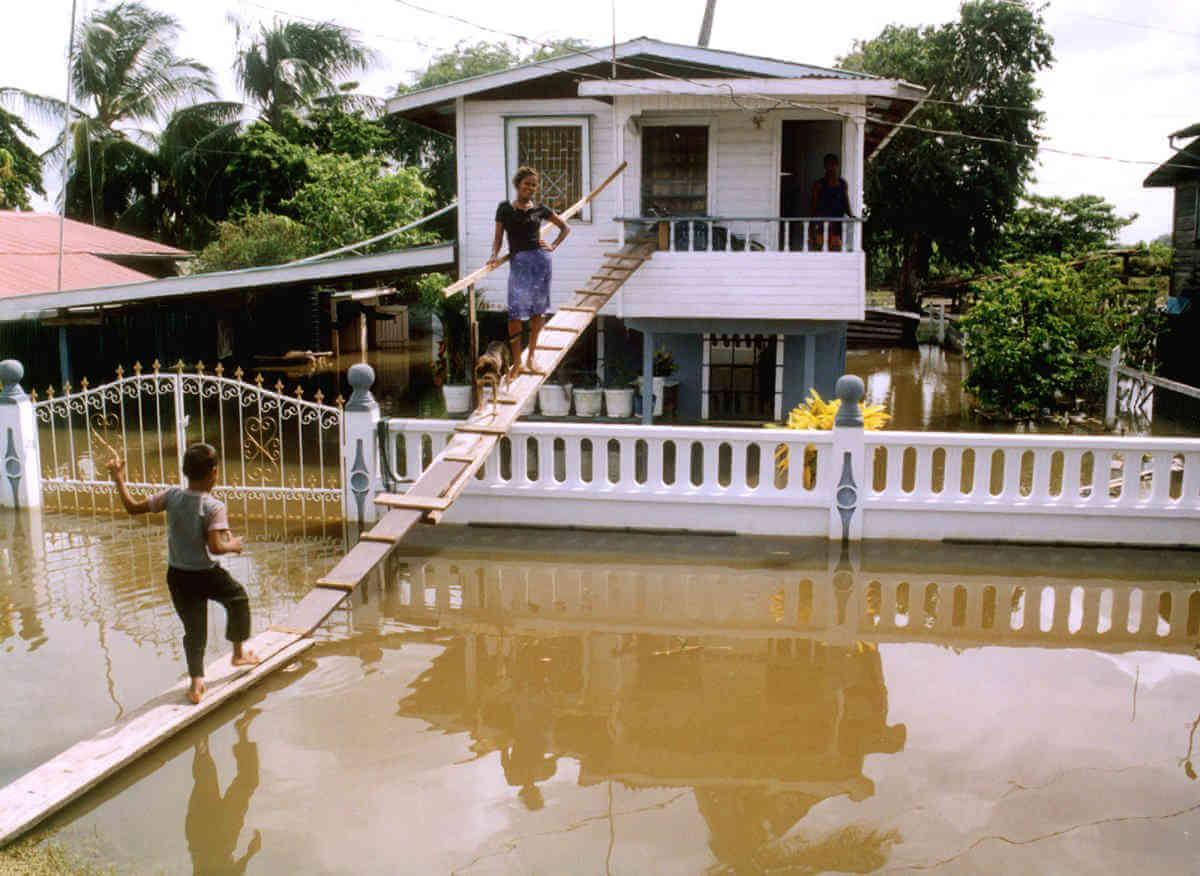As unusually high tides batter Guyana’s below sea level coastline triggering extensive flooding in several communities, the issue of moving the capital and population to higher ground is once again engaging the attention of authorities.
As Guyanese watch wave after wave of dirty brown water easily crash over five-foot high seawalls inundating homes and farmlands, fears that an extended period of high tides could cause even more damage have begun to arouse the Guyanese psyche to an extent not experienced in decades.
Traditional and social media video footage of waves easily crashing over the sea defense system, rolling over the lifeline east-west highway to Suriname and into yards and, homesteads and farmlands pushed at least one senior official to suggest that Guyana may soon need to build a new capital and move hundreds of thousands of people away from the coast. His view is widely shared even though most locals balk at the idea of having to start life all over if such is the case.
Most of Guyana’s 270 mile-long coastline is a full six feet below the level of the Atlantic, forcing authorities to spend millions annually maintain an intricate protection system involving floodgates, drainage canals, lakes and open trenches. The gates can only be opened at low tides to drain off flood waters and the system can’t only handle no more than two inches of rain in a 24-hour period.
So this week’s cycle of extremely high tides has one again brought back the issue of moving the capital away from the coast.
“We should seriously consider moving the population to higher ground, and start building a modern city,” Junior Infrastructure Minister Jaipaul Sharma said after touring several coastal communities experiencing repeat flooding cycles. Current high tide warnings extend into early November, but dozens of cattle and poultry farmers have already lost out to salty flood waters that could render farmlands useless for months to come.
Apart from the annual high tides cycles and the havoc they wreak, Sharma pointed to global concerns about sea level rises as massive glaciers melt in the far north of the world, suggesting that the problem will be more permanent than cyclical.
“I will say that this is the effects of global warming and higher global temperatures that melt glaciers adding to the amount of sea water that cause global sea level rise,” he said, repeating warnings about moving the capital.
Most of Guyana’s population of about 800,000 live on a narrow strip of coastal lands extending from the far north on the way to Venezuela running southeast to the border Corentyne River with Suriname.
Like neighboring tourism-dependent Caribbean islands, most of the country’s infrastructure is near the coast, including the crucial rice, sugar and cash crop sectors.
Late head of government Forbes Burnham had in the 1970s floated the idea of moving the capital to the northwestern Matthews Ridge area near Venezuela and looking out to Trinidad. The area is hilly with a natural deep water harbor beckoning.
Guyanese balked at the idea backed then, saying they had had no intentions of leaving the breezy capital to live in the mosquito-infested jungle. Now the issue is on the table once again, with the Caribbean Community warnings about the effects of global warning on the region lingering. Any rise in global temperature about 1.5 degrees Celsius, argues Caricom, could spell doom for the region as coastal communities would be swamped by flood waters and coral reefs would bleach to death.
Similar high tide warnings are also in effect in Trinidad and Barbados. In Trinidad, especially, fishermen have taken to repairing boats and equipment while they wait out an angry sea. The same is true for Barbados to the east.
“The ministry provides its assurance that the sea and river defense department will continue to actively pursue the required measures to mitigate the impacts on flooding on coastal communities. Residents of low-lying coastal communities are advised to take the needed precautions during the remainder of the spring tide period,” Sharma said.





























